Are miniature Rottweilers real?
A Rottweiler (the big one) is a working breed originally bred to protect cattle herds from predators and other outside threats. That working lifestyle has given these dogs strength, intelligence, and a protective nature that can make for a great family pet.
However, the traditional Rottweiler breed is quite large. Standard rottweilers measure up to 27 inches at the shoulder and can weigh over 100 pounds. These large, muscular dogs require lots of room to run around and can suffer from obesity and behavioral problems if they don’t get enough exercise.
Because their size keeps them from being good city dogs, rottweilers have dropped in popularity in recent years. However, some breeders are looking to combat this difficulty by producing a miniature Rottweiler or teacup variety of the breed.
What is a Miniature Rottweiler?
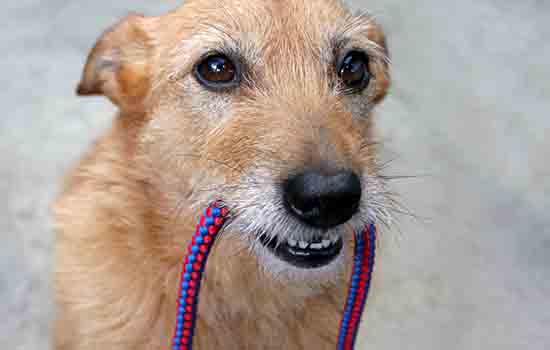
The miniature rottweiler is not an official breed, and the American Kennel Club does not recognize it. This new breed is considered a “designer dog,” meaning that it’s a new development bred for aesthetics and to match the needs of modern individuals rather than adhering to older breed guidelines.
Because there is no official breed standard, there are some variations in the appearance and background of miniature rottweilers on the market. You’ll want to ask your breeder about their stock to get a better idea of what you’re getting.
In general, a miniature rottweiler meets the following criteria:
- Small size, usually no more than 30 pounds when fully grown.
- Have black fur with tan points on the legs, face, and chest, matching the appearance of full-size rottweilers.
- Smooth glossy coat with minimal grooming required.
- Exhibit floppy ears and a short, bobbed tail.
- May have more puppy-like features such as wide-set eyes and a short snout.
Most people looking for a miniature rottweiler, also called a “rottiebear” or “mini Rottie,” want a dog with the same confident, easygoing attitude as the full-size breed but without the intimidating stature.
How Are Miniature Rottweilers Bred?
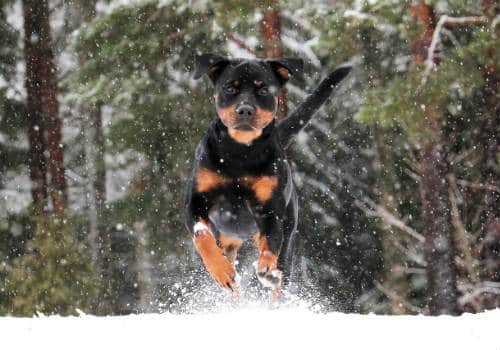
A miniature or teacup Rottie is made by out-crossing a full-size rottweiler with a different breed. This is the same process that created all dog breeds throughout history, and it’s the idea behind modern designer dogs.
Some common breeds mixed with rottweiler to produce the mini-Rottie look include:
- Beagle
- Chihuahua
- Poodle
- Pug
A breeder might use other, more established designer breeds or mixtures to add diversity to the bloodline. For example, a puggle (beagle x pug) might be bred with a rottweiler. This mixture would retain many of the rottweiler’s features, such as the shape of its head, ears, and snout.
Some dogs sold as mini Rotties or rottiebears do not have any rottweiler heritage at all. Instead, they merely resemble miniature rottweilers due to their coat pattern and the shape of their heads and tails. While these pups are cute, their personality is not what you’d expect of a rottweiler.
Is There Such a Thing as a Pure-Blood Miniature Rottweiler?
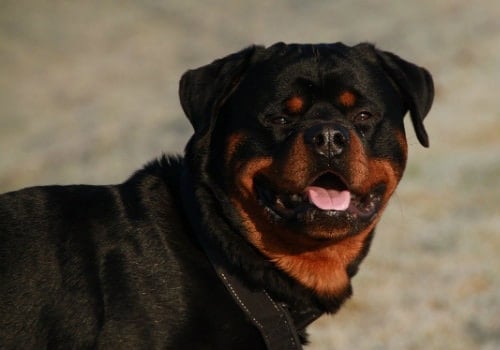
Because there is no official breed or widely accepted pedigree for miniature rottweilers, a mini Rottie can’t be “pure-bred.” All mini rottweilers are, by definition, mixed breeds. Any breeder advertising their pups as pure breeds should be taken with a grain of salt.
Because miniature rottweilers are a popular new designer breed concept, there is high demand. Some unscrupulous breeders may try to cash in on that demand.
Here are a few tactics to watch out for:
- Selling dogs with genetic deformities and calling them “miniature” or “teacup” varieties. A true mini rottweiler is bred over generations of out-crossing to produce a specific look. An individual dog born with dwarfism or another genetic issue is not a mini rottweiler.
- Selling puppies and lying about how big they’ll get. Be wary of any breeder who only has puppies and won’t let you meet the parents. If there are no photos of the parents on the breeder’s site and you can’t meet them, you have no way of knowing how big your puppy will get.
- Breeding together the runts of each litter to get smaller and smaller puppies. Runts, or undersized individuals, can have health problems and are usually stunted because of them. Repeatedly breeding runts can lead to very unhealthy stock. Out-crossing with smaller breeds is the best way to make healthy mini rotties.
- Selling dogs of a different breed entirely and calling them miniature rottweilers. There is nothing wrong with a black-and-tan chihuahua or a miniature pinscher, but you should know what you’re getting. Different breeds have different personalities, so you shouldn’t get one breed and expect it to act like the Rottie you wanted.
If you’re looking to buy a miniature rottweiler puppy, you’ll want to ask the breeder about his specific breeding program and goals. He should be honest and straightforward about his breeding stock and which breeds he’s using to create his dogs.
Any puppy breeder who refuses to let you see his facility, who won’t show you the dog’s parents or who makes unlikely claims about its heritage, is a red flag.
Is a Miniature Rottweiler a Good Family Dog?
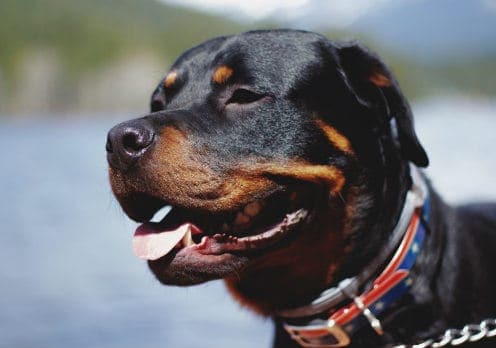
Part of the appeal of owning a pure-blooded dog rather than a mixed breed is the assurance that you’ll know what to expect from its personality.
Pure-bred dogs have individual variations in their personalities and attitudes, but most members of a breed share the same basic characteristics. Years of selective breeding make certain physical and psychological treats more prevalent.
For example, huskies are bred for energy and endurance. Labradors are bred for enthusiasm and loyalty. Standard-sized rottweilers are bred for independence and protectiveness.
When you get a standard rottweiler, you can be prepared for a dog who is headstrong and protective of your home and family. With training and a firm hand, these dogs can be excellent companions and true gentle giants.
Unfortunately, because of their size and headstrong natures, rottweilers have picked up a reputation as dangerous breeds. This is one reason why the idea of a miniature rottweiler is appealing to many people—A dog with the look of a rottweiler but without the dangerous size seems like a perfect solution.
However, designer dogs are mixed breeds that may not have consistent personalities. Moreover, certain mixtures are prone to behavioral issues. For example, chihuahuas and rat terriers are commonly aggressive. Mixing these breeds with a rottweiler could amplify the negative qualities of both.
One benefit of adopting an adult dog from a shelter is that you have a clear idea of what the animal’s personality will be like. If you’re buying a puppy from a breeder, your best indicator will be the dog’s parents. This is why it’s important to only buy from breeders who let you meet their breeding stock.
Other Dog Breeds That Resemble a Miniature Rottweiler
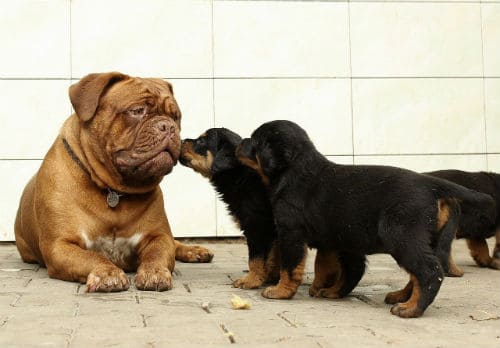
Rottweiler breed enthusiasts are not pleased with the popularity of the miniature rottweiler. Kennel club members are committed to preserving existing breeds, not creating new ones. For this reason, the mini Rottie or rottiebear gets a lot of negative press from the show dog world.
In some cases, this judgment is justified. Designer dogs are a popular cash-grab for puppy mills and unscrupulous breeders. However, this does not mean that designer dogs and out-crossings are bad.
Every dog breed was created by someone who decided to make it by breeding different types of dogs together for a specific trait. There is no reason why this should not continue into the modern-day.
In the past, dogs were bred to fulfill specific jobs such as guarding and herding cattle. In modern times, a dog’s primary role is companionship. This is why designer breeds like the rottiebear and puggle are bred to be good house pets.
Nevertheless, there are some drawbacks to buying a rottiebear or miniature rottweiler. It can be hard to find a reputable breeder, and the breed is too new to have a consistent personality or a specified breed makeup.
If it’s the classic rottweiler look that you’re after more than the personality, below are a few small breeds that share the black-and-tan markings:
- Miniature pinscher. Resembling small Dobermans, the miniature pinscher or “min pin” is a very old crossbreed with an established history.
- Manchester terrier. Similar to a miniature pinscher, these small black-and-tan dogs have naturally erect ears and a compact but muscular physique.
- Chihuahua. Black and tan is a common color combination for a chihuahua. A short-haired black and tan chihuahua can look exactly like a mini rottweiler.
- Black and tan hound. A larger dog, these purebred canines, are built for hunting. They share a rottweiler’s coloration but have longer ears and snouts. They are smaller than a rottweiler and have a more relaxed temperament.
- Dachshund. Black and tan is a typical coloration for dachshunds, and these short-statured pups have bold personalities that make them similar to a big dog in a small package.
- Lancashire Heeler. A British herding breed, this small dog is related to corgis and terriers. Available in black and tan or silver and tan, these dogs are compact, energetic, and quite intelligent.
Whether you buy a designer pup, adopt a mixed breed from the shelter, or find a breeder of a pure-bred, the most important part of pet ownership is choosing a dog who will fit in with your family. Take some time to research a breed or breeds involved in across and get to know the parents of a puppy before you buy it. This will help you decide if the new pooch is right for you.


we have loved our rotties…they have all died from cancer…5….we would really like a mini, but looking at the info, not sure if that’s feasable. the guy in town has a puppie mill, which really upsets us…so many animals need homes. just adopted kitten from floods in texas, and kitten from fires in cali. we really miss our rotti, Charlie, and wanted something smaller…whats your opinion. thanks, Kimmy
Which guy has a puppy mill? What town do you mean? Curious, because I haven’t heard of many breeders of the Mini Rott. I am just starting my own Mini line, and all of my dogs are thoroughly health tested (Embark DNA as well as OFA hips/elbows/patellas). I’m located in British Columbia, Canada.
Dear Kimmy
We adopted a mini Rottie from people who after a wk didn’t want him anymore. His papers show he is from a breeder in Pennsylvania . While he has a Rottie temper and tendencies he is a sweet dog. Unfortunately because of the breeding he has needed already 1 knee replacement surgery (at 9 months) because his kneecap popped out constantly. It was a difficult recovery. Now 2 years later we are having to do it again for the same reason. We will now spend another $5000.- to fix what these breeder did to him. So just heads up. Our Vet and orthopedic dog surgeon are convinced that by mixing up these breed his patella got messed up. He also is suffering at 3 years from arthritis now. Im sure not all mini Rottie have this problem but u won’t find out till their final growth spurt at 6 to 9 months.
Best of luck
Which guy has a puppy mill? What town do you mean? Curious, because I haven’t heard of many breeders of the Mini Rott. I am just starting my own Mini line, and all of my dogs are thoroughly health tested (Embark DNA as well as OFA hips/elbows/patellas). I’m located in British Columbia, Canada.